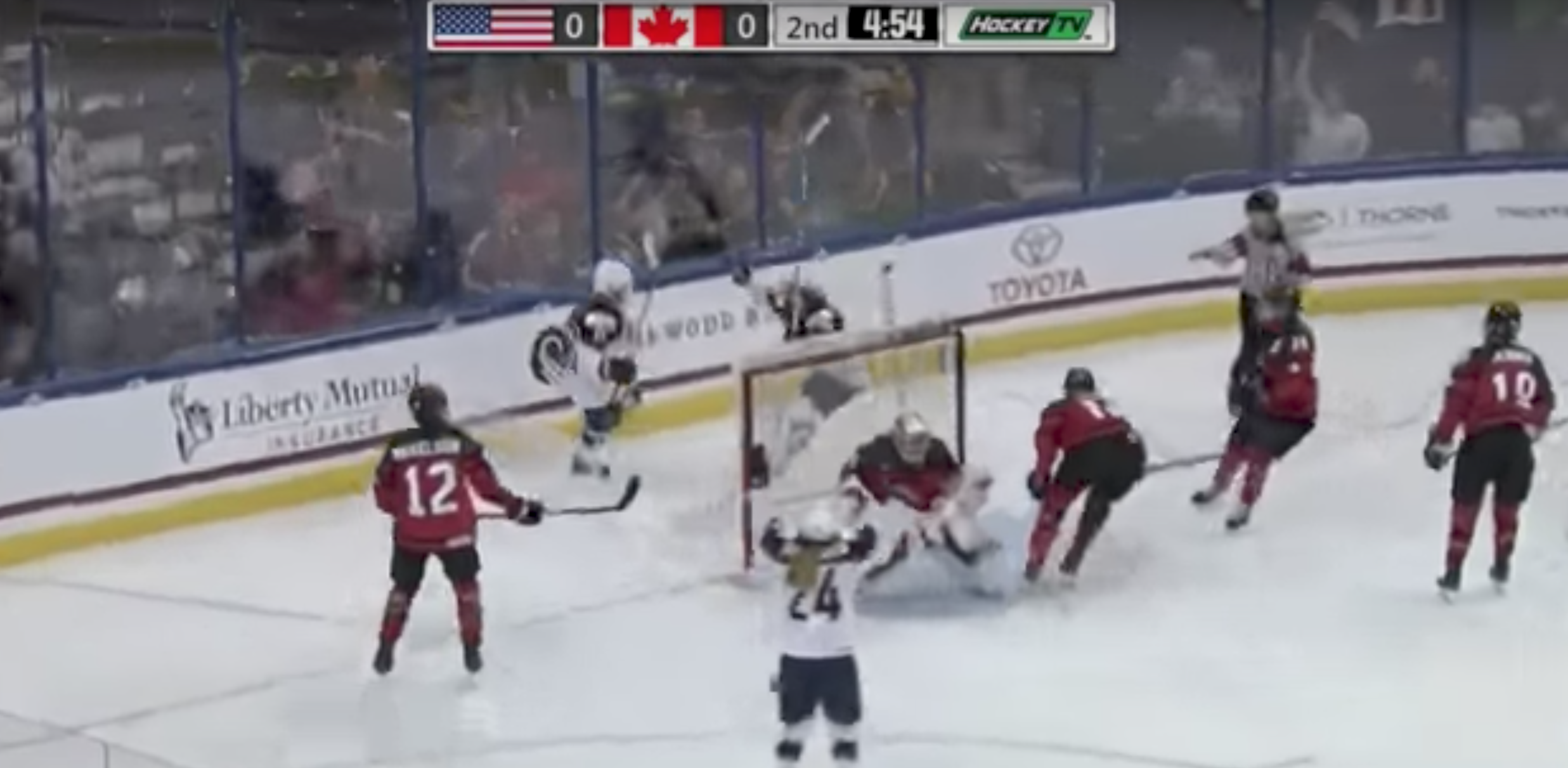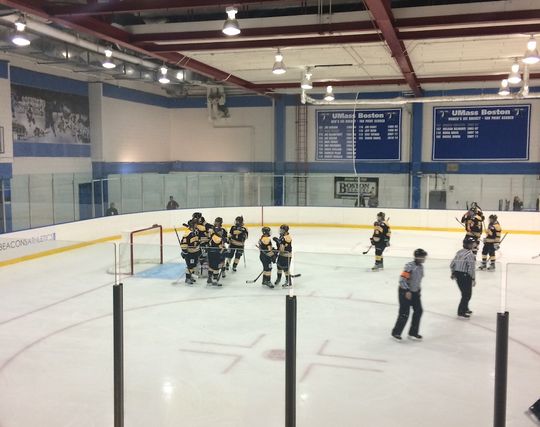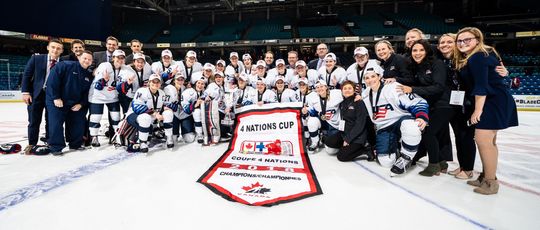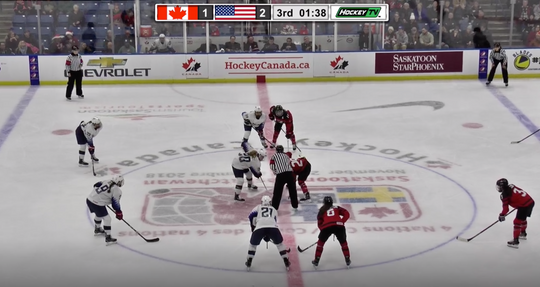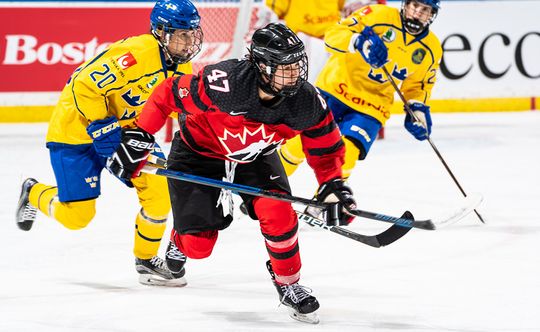The 2017 Four Nations Cup took place in and around Tampa, Florida between November 7 and 12, where the United States Women's National Team is centralized ahead of the Pyeongchang Olympics. The tournament, featuring the United States, Canada, Finland, and Sweden, played out much as expected with Team USA and Team Canada drubbing their opponents and fiercely fighting with each other.
Sweden had the hardest time at Four Nations, scoring only two goals in four games. They lost to Canada 9-0, 3-1 to Finland (giving up three third period tallies after leading 1-0 headed into second intermission), and 5-0 to Team USA. While they took Finland to overtime in the third-place game, they couldn't get that final goal and fell 2-1.
Finland didn't fare much better, losing 8-2 to the United States and 5-0 to Canada, their only wins coming against Sweden.
The first tilt between USA and Canada was a heavily-penalized affair with every period featuring lots of special teams, and Team USA came out on top by a score of 4-2, though a shorthanded goal by Meghan Agosta gave the Canadians a chance to tie it late in the third. Team USA bounced back on that same power play, however, on a goal from Alex Carpenter, ensuring their win.
In the final, championship game on Sunday, both of the world's best ice hockey teams seemed calmer, and the game began more like a chess match. After a closely contested first period featuring some point-blank saves by both Maddie Rooney and Geneviève Lacasse, the second period saw the Americans take over and get two goals out of Hannah Brandt: one off the rush and one parked by the side of the net on the power play.
The third period featured Team Canada's strong forecheck, but Jennifer Wakefield took a bad penalty for a hit from behind while hemming the Americans in their own zone, putting her team on the PK. But immediately after that kill, Kelly Pannek took a penalty, and Canada would get their own chance on the PP. Meghan Agosta capitalized to cut the lead in half when she was able to bury a one-timer from the right circle with just over 9 minutes remaining in the game.
The Americans almost immediately took another penalty, with Megan Keller going off for hooking, but a strong penalty kill kept Team USA on top. They would then get another late power play, and thanks to some strong play at the center point by Cayla Barnes, the puck ended up in the blue paint for several chances, and was finally buried by Hilary Knight to give the United States a 3-1 lead.
Canada would spend the rest of the clock shorthanded, and Amanda Kessel ripped one to the back of the net to put Team USA up 4-1. Kendall Coyne would score a backhander off the rush with just 17 seconds left to make the final score 5-1.
This was an odd year for Four Nations, thanks of course to Olympic prep. Both Team USA and Team Canada use centralization or "residency" to train their teams in the lead-up to Olympic play, but other teams do not follow this practice since they do not have the same resources. As a result, neither Finland nor Sweden necessarily had been practicing with each other for very long before this tournament. All four teams were focused on trying out new things before the Olympics when the stakes are higher. Team USA, for example, in the championship game, dressed 18-year-old Cayla Barnes at D (recently called up from Boston College), frequently using her as a power play quarterback, and veteran defender Gigi Marvin skated as a left wing.
Canada, with as deep a roster as ever, didn't play some of their younger players, such as Amy and Sarah Potomak. They haven't used veteran netminder Shannon Szabados either as of late; her previous absences in exhibition matches against Team USA were explained as being because of illness, but she has still not returned.
We know that Team USA can score at will, but everyone likely expected a slightly closer championship game. Team Canada's collapse towards the end led to a lopsided final score. Games between these two teams seem to live and die by the penalty calls. The first ~50 minutes of this Four Nations Championship game were extremely close, and perhaps a slower-motion version of what we can expect the next time these teams meet outside of friendlies -- in Pyeongchang.
Coverage of this Four Nations tournament drew some criticism. The only way to watch the games was to buy a $30USD month pass to the streaming service HockeyTV. This resulted in only a few hundred viewers even for the USA-Canada matchups. While Four Nations isn't necessarily the biggest tournament in women's hockey (it doesn't even count towards IIHF rankings), it is still often good and interesting hockey for fans, and a great way to get a look at teams as they prepare for either the Olympics or the IIHF World Championships. Last year's Four Nations stream from Finland was free from Leijonat, and the stream from Sweden in 2015 was significantly cheaper (under $10USD including VAT). Considering this is the last true tournament play between Team USA and Team Canada before Pyeongchang, it is odd that there was not more hype around Four Nations this year and that USA Hockey did not promote it more aggressively.
But, the next two games between Team USA and Team Canada will be broadcast on NBCSN in the United States from NHL rinks. The teams meet at Xcel Energy Center in St. Paul, Minnesota on December 3 at 4:00 PM Eastern (3:00 PM Central); and again at the SAP Center in San Jose, California on December 15 at 10:00 PM Eastern (7:00 PM Pacific).
(Photo: USA Hockey/YouTube)
